#nobility
Text

The armoury of the nobleman Uboldo invaded by Milanese insurgents to obtain weapons on 19 March 1848
by Carlo Bossoli
#carlo bossoli#art#armoury#ambrogio uboldo#milan#italy#nobleman#nobility#lombardy#five days of milan#palace#weapons#rioters#insurgents#revolutionaries#antiques#antique#armour#first italian war of independence#unification of italy#risorgimento#revolutionary year of 1848#revolutions of 1848#europe#european#history#italian#ambrogio maria martiniano uboldo#heraldry#banners
30 notes
·
View notes
Text
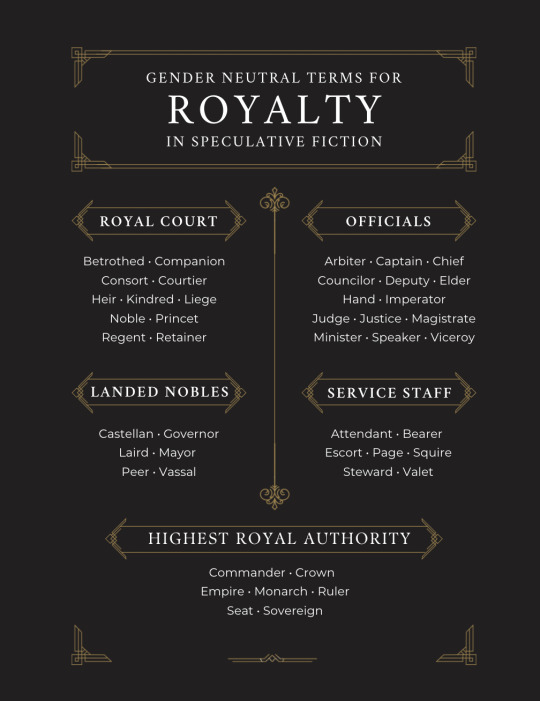
I was inspired by @jezifster's recent question about non-gendered royal titles, and I put together this graphic to serve as a jumping off point for people writing monarchies in SFF !
Obviously this non-exhaustive list contains mainly western titles, all in English. Feel free add any on additional gender neutral terminologies that you can think of, including those from different languages and cultures!
A small addition: I'm not a linguist or historian and put this list together based on some quick googling! While you're free to flex the usage and meanings of these words however you choose, researching the real-world context of each term before using them in your own writing is a best practice.
#writeblr#non-gendered language#gender neutral terms#royalty#nobility#language#fiction#dnd#ttrpg#fantasy#science fiction#im sorry lol i just love making lists#worldbuilding#lgbtq
9K notes
·
View notes
Text
Fantasy Guide to A Great House (19th-20th Century) - Anatomy of the House
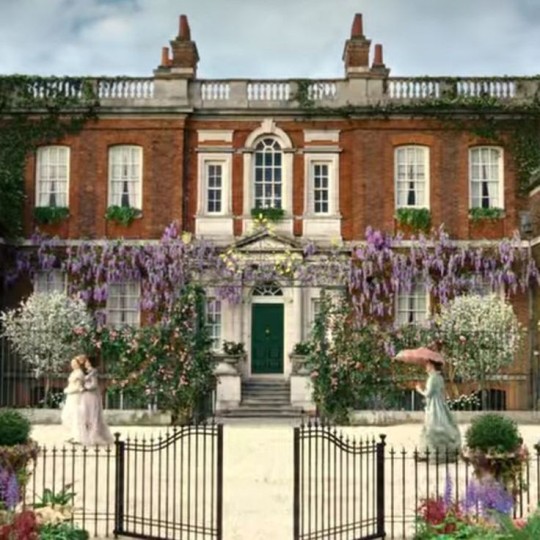
When we think of the Victorians, the grand old Gilded Age or the Edwardians, we all think of those big mansions and manors where some of our favourite stories take place. But what did a great house look like?
Layout

All great houses are different and some, being built in different eras, may adhere to different styles. But the layout of certain rooms usually stayed somewhat the same.
The highest floors including the attic were reserved the children's rooms/nursery and the servants quarters.
The next floor would be reserved for bedrooms. On the first/ground floor, there will be the dining room, drawing room, library etc.
The basement/cellar would be where the kitchens and other food related rooms would be. Servants halls and boot rooms may also be down here too along scullery, where sometimes a maid would clean.
Rooms used by Servants
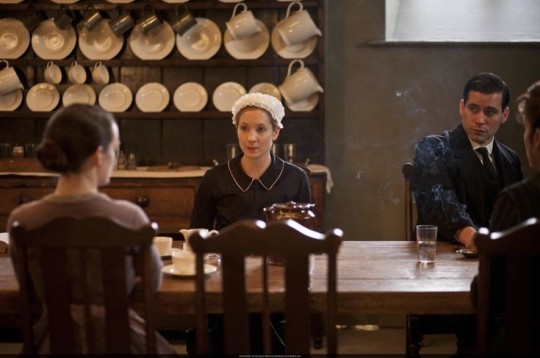
Boot Room: The Boot Room is where the valets, ladies maids, hallboys and sometimes footmen clean off shoes and certain items of clothing.
Kitchen: The Kitchen was usually either in the basement or the first floor of the house, connected to a garden where the house's vegetables were grown.
Butler's Pantry: A butler's pantry was where the serving items are stored. This is where the silver is cleaned, stored and counted. The butler would keep the wine log and other account books here. The butler and footmen would use this room.
Pantry: The Pantry would be connected to the kitchen. It is a room where the kitchens stock (food and beverages) would be kept.
Larder: The larder was cool area in the kitchen or a room connected to it where food is stored. Raw meat was often left here before cooking but pastry, milk, cooked meat, bread and butter can also be stored here.
Servants Hall: The Servant's Hall was where the staff ate their meals and spent their down time. They would write letters, take tea, sew and darn clothes. The servants Hall would usually have a fireplace, a large table for meals, be where the servant's cutlery and plates would be kept and where the bell board hung. (these bells were the way servants where summoned)
Wine Cellar: The wine cellar was where the wine was melt, usually in the basement. Only the butler would be permitted down there and everything would be catalogued by him too.
Butler's/Housekeeper's sitting rooms: In some houses, both the butler and the housekeeper had sitting rooms/offices downstairs. This was were they held meetings with staff, took their tea and dealt with accounts.
Scullery: The scullery was were the cleaning equipment was cleaned and stored. The scullery may even also double as a bedroom for the scullery maid.
Servery: The Servery connected to the dinning room. It was where the wine was left before the butler carried it out to be served. Some of the food would be delivered here to be carried out as well.
Servant's Sleeping Quarters: All servants excepting perhaps the kitchen maid and outside staff slept in the attics. Men and unmarried women would be kept at seperate sides of the house with the interconnecting doors locked and bolted every night by the butler and housekeeper. If the quarters were small, some servants may have to share rooms. Servants' bathrooms and washrooms would also be up there, supplied with hot water from the kitchens.
Rooms used by the Family
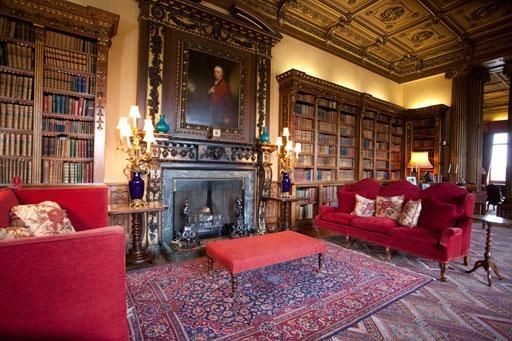
Dining room: The dining room was where the family ate their breakfast, lunch and dinner. It was also where the gentlemen took their after dinner drink before joking the ladies in the drawing room.
Drawing room: The Drawing Room was sort of a living/sitting room. It was mainly used in the evenings after dinner where the ladies would take their tea and coffee before being joined by the men. It could also be used for tea by the ladies during the day. The drawing room was seen as more of a women's room but any of the family could use it. The drawing room was a formal room but could also be used for more casual activities.
Library: The library is of course where the books are kept. The family would use this room for writing letters, reading, doing business with tenants and taking tea in the afternoons.
Bedrooms: The bedrooms would take up most of the upper floors. The unmarried women would sleep in one wing with bachelors at the furthest wing away. Married couples often had adjoining rooms with their own bedrooms in each and equipped with a boudoir or a sitting room.
Nursery: Was where the children slept, usually all together until old enough to move into bedrooms. They would be attended to be nannies and nursemaids round the clock.
Study: The study was a sort of home office where family could do paperwork, chill and write letters.
Dressing room: Dressing Rooms where usually attached to bedrooms where the family would be dressed and their clothes would be stored. The valets and ladies maids would have control of the room.
Hall: The hall was where large parties would gather for dancing or music or to be greeted before parties.
Furnishings and Decor

Most of these Great Houses were inherited which means, they came with a lot of other people's crap. Ornaments from anniversaries, paintings bought on holiday, furniture picked out by newly weds, all of it comes with the house. So most of the time everything seems rather cluttered.
As for Servant's Quarters, most of the furnishings may have been donated by the family as gifts. Most servants' halls would have a portrait of the sovereign or sometimes a religious figure to install a sense of morality into them.
#Fantasy Guide to A Great House#19th-20th Century#Anatomy of a great house#writeblr#writing reference#writing advice#writers on tumblr#writing advice writing reference#writing advice writing resources#writing resources writing advice#writing reference writing advice#Writing reference writing resources#Fantasy Guide#nobility#Servants#writing help
2K notes
·
View notes
Text
nobility titles (in order of importance) - writing prompts
empress / emperor - rules over an empire, composed of several kingdoms or countries. highest rank
king / queen - rules over a kingdom. could be a part of an empire, but still quite powerful
duchess / duke - rule over a duchy (a part of a kingdom, ex. a province or large territory). second only to the literal king and queen
marquis / marchioness - support dukes and duchesses, don't usually own territory
countess / count/earl - rule over cities. have their own castles. pretty cool guys
viscount / viscountess - rule over smaller lands, like towns or villages. they can also be the children of counts/earls and countesses
baron / baroness - the 'servants' of nobility. usually only people who have their own land + a noble rank.
⚜️.
princess / prince - the descendants of royalty
knight / dame - usually military folk with titles (addressed as "sir")
lady / lord - addressing anyone below the rank of queen / king (unless their title is princess / prince)
#writing#nobles#nobility#writing ideas#writerblr#creative writing#writblr#lyralit#writers#writers block#readerblr#writing prompts#writing community#writing tips#fiction#fantasy fiction#writing fantasy#titles#writing prompt#writers' block#writing help#writing advice#writing resources#writer tips#writing characters#fantasy writing#fantasy character#high fantasy
6K notes
·
View notes
Text

Countess Hayashi Misao, 1902.
#aesthetic#art#art history#fashion#historical fashion#victorian#Edwardian#Edwardian aesthetic#nobility#Japan#japanese nobility#Hayashi Misao#photography#vintage photography#Edwardian fashion#Edwardian era#1900s clothing#1900s court dress#1900s fashion
205 notes
·
View notes
Photo
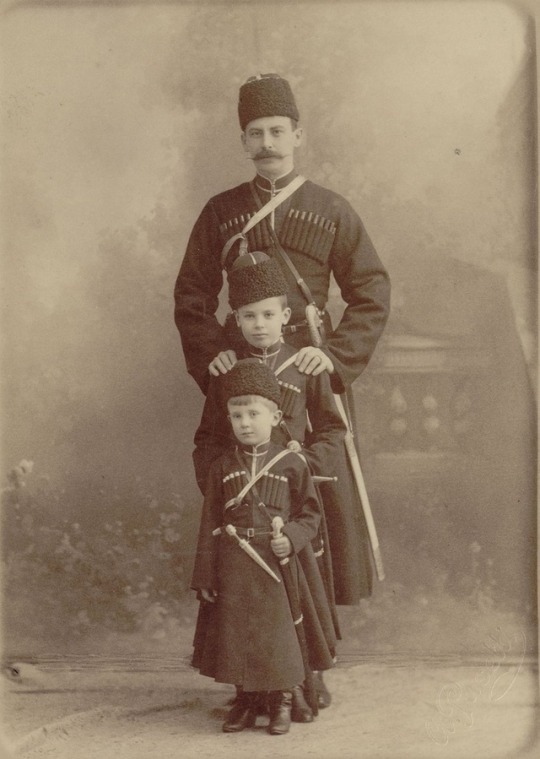
Prince Nicholas Yusupov with his two sons, Nicholas and Felix, all dressed in splendid Cossak uniforms
181 notes
·
View notes
Text

It's you!
You come from a family of nobility and are the only child. You grew up with doting parents, your mother very nurturing and your father very iron-fisted.
You are the heir to the family fortune and your father's company--a shipping company in charge of transporting imported and exported goods across the water. How boring.
You would rather spend your time learning more about what always served as your backyard--the sea. You grew up hearing tales told by your mother and the house staff that the sea was once filled with giants, but over the years reports and sightings had dwindled significantly.
You always felt drawn to the sea, especially after an encounter you had as a child with two mer pups.
#cosmic tides#cosmic tides lore#cosmic tides y/n#dca mer au#fnaf security breach#fnaf sb#fnaf dca au#fnaf dca#fnaf y/n#nobility#reference sheet#child y/n#adult y/n#wetsuit#swim gear#precious trinkets#mother's heirlooms#size references
885 notes
·
View notes
Photo

There is nothing noble in being superior to your fellow man; true nobility is being superior to your former self.
- Ernest Hemingway
2K notes
·
View notes
Text

Lyassandra Cousland
#dragon age#da origins#dragon age origins#warden cousland#female cousland#cousland origin#Cousland#warrior#digital illustration#procreate#art#fantasy#fanart#warden#grey warden#portrait#nobility
314 notes
·
View notes
Text
"I thought we got rooms to ourselves," said Teppic.
Chidder, who had laid claim to the least exposed bed in the whole refrigerator, nodded at him.
"Later on," he said. He lay back, and winced. "Do they sharpen these springs, do you reckon?"
Teppic said nothing. The bed was in fact rather more comfortable than the one he'd slept in at home. His parents, being high born, naturally tolerated conditions for their children which would have been rejected out of hand by destitute sandflies.
Terry Pratchett, Pyramids
#teppic#chidder#pyramids#discworld#terry pratchett#assassins' guild#boarding school#first day of school#bonding#standards#royalty#nobility#upper class#mattresses#comfortable#family#parenting#destitute sandflies#say nothing
90 notes
·
View notes
Text




#royalcore#royalty aesthetic#light academia#nobility#dark academia#light acadamia aesthetic#dark acadamia aesthetic#found on pinterest#photography#castles#vintage#historical
832 notes
·
View notes
Text
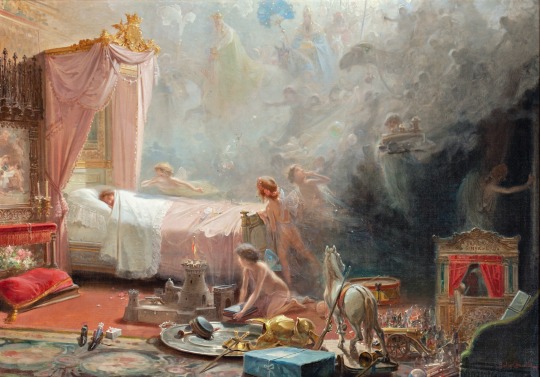
Night of the Three Kings by Julio Borrell Pla
#julio borrell pla#art#night#dream#dreams#three kings#three wise men#los reyes magos#bed#beds#royal#royalty#nobility#aristocratic#spain#spanish#europe#european#fantasy#sleep#sleeping#dreaming
289 notes
·
View notes
Text
Angst!!
Two lovers [Character] one of them are the head of the family/Nobility line and their ""Lover [You/Reader]"" is a Commoner.
Oneday the Noble was seated in the dinner table with their ""love"" after months of being un able to see each other because of the Noble's busy skedule.
"Am Entering a Arraged Marrige "
the Noble said to their ""lover"" their lover rightfully shocked asked
"Was their love not great enough?"
The noble did not dare to look at their ""Lover's"" eye
"It has a lot of oppertunities"
the noble state's
"Isint having two spouse in one roof a horrid idea?! And am i really that easy to be replaced!??"
The Lover, was rightfully Upset. They did not want the Noble to asnwer them...
They didnt, they just left.
They broke up days after.
In the following weeks the "Noble" was preparing the arragements for the wedding one of their last items to fit was their wedding garmets.
They entered the esteemed shop.
"Good afternoon! Wellcome of our establishment"
The Noble noticed its their Ex lover's voice that greeted them with the warmth of the sun something they havent heared since their work load doubled.
"Oh"
the Ex lover looked at them their smile wavered a bit but they needed to keep a formal front
"Do you have a reservation?"
"Yes, my wedding attire"
"great please follow me, ill get the measuring intruments please wait here"
They hoped that the Noble will go after them but they made it clear that they would not give anything valuable to the Nobility line but hinder it.
#genshin impact#genshin angst#genshin#sagau angst#ayato x reader angst#kamisato ayato#royalty#nobility#arranged marriage#royalty au#wriothesley#wriothesley x reader#eula lawrence#eula x reader#ningguang#genshin sara#alhaitham angst#althaitham#genshin impact neuvillette x reader#neuvillette
150 notes
·
View notes
Text
Fantasy Guide to A Coronation
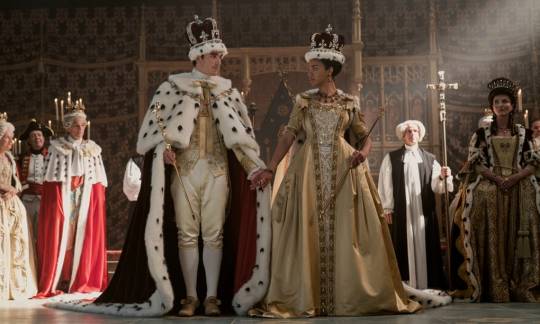
Coronations are the ceremony in which your monarch is confirmed by church or state or the people by the bestowing of a crown and regalia and the taking of oaths. So how do we write them?
When does Coronation takes place?

A Coronation usually takes place some time after death of the previous monarch. Past coronations would take place mere weeks after the death of a monarch as it was essential that the monarch be crowned to confirm their legitimacy. Modern coronations would take place months after the death of a monarch. In this time period, the new monarch IS the monarch - just uncrowned. This does not effect their powers in any way.
What’s in a Coronation?
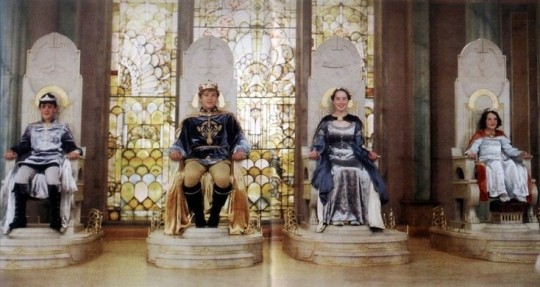
Coronations are usually very lavish affairs. These are not only just ceremonies, these are statements a sort of opening show to the monarch's reign. A Coronation will usually be accompanied by numerous parades, balls, pageants, military displays and concerts. It's usually framed as a celebration of the Royal family of the monarch or the nation as a whole. The population is expected to celebrate.
Who attends a Coronation?
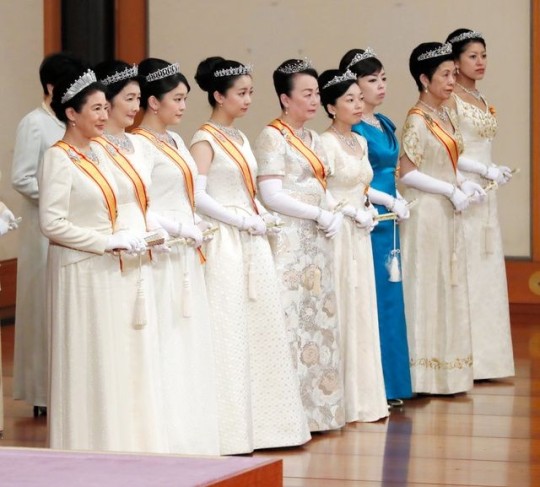
Coronations were big affairs. Many invitations would be sent out, inviting representatives from other nations, friends and allies, even uncertain friends and unfriendly nations. Other monarchs are generally not invited out of tradition but they will send heirs and relatives to represent them. Coronations were a display of wealth and power and it was in the monarch's best interest to get as many people there as possible. Coronations were also essential to monarchy for one very good reason: not only were you recognised by the state but it was a chance to accept fealty - promises of loyalty - from nobles. Many nobles from across the land would be invited to witness and then profess their loyalty to the Monarch.
What to Wear to a Coronation?
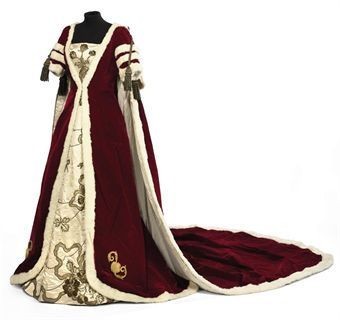
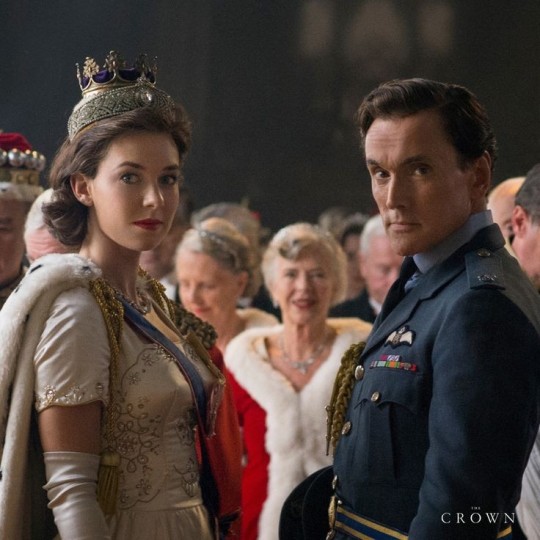
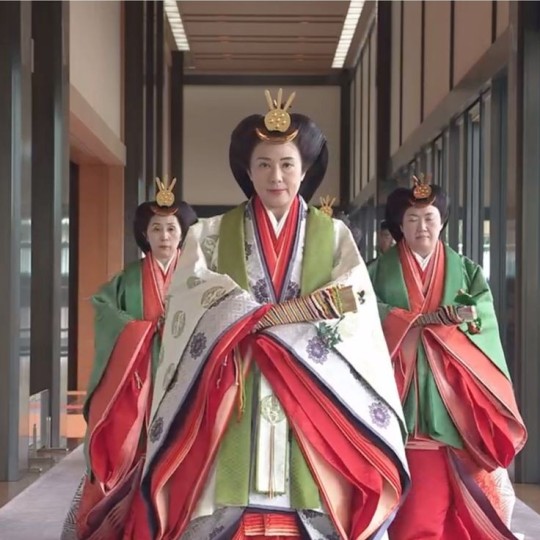
Coronations were meant to be pageants so everybody wore their very best clothes, jewels and put their best foot forward. Peers or nobles would wear red velvet robes (see above) over their clothes along with coronets (also see above) denoting rank. Traditional clothing would also be encouraged, the Japanese Imperial family often don traditional garments for their enthronements. The Royal family would wear military uniform or royal robes usually purple velvet rather than red trimmed with ermine. They would also wear coronets. The monarch would usually be the most expensive dressed, yet however this can also backfire. The monarch has to be modest yet also outdone everybody. George IV made the grave faux pas of spending a shit ton of money on his outfit for the coronation which he only wore the once. Most monarchs tend to have their Robes and clothes embroidered with emblems of the nation and to wear significant relics during the ceremony.
The Ceremony

After a procession through the streets the monarch and/or their Consort arrive on the scene. They will be wrapped in red velvet Robes on their arrival and accompanied by pages or maids of honour who help carry the train of their Robes.
Before the monarch, selected peers will carry the regalia. These are the relics that are bestowed on the monarch throughout the ceremony. These usually include the crown itself, the sceptres, the coronation ring, the coronation Robes and an orb.
In some instances, the monarch would be presented to the assembled crowd at each Cardinal point - North, south, east, west and proclaimed the undoubted king/queen/sovereign. It is then the crowd issue an acceptance.
Monarchs would then be asked to take oaths by the figure ordaining them before the assembled crowd. These oaths would be one of service, something along the lines of promising to uphold law and tradition, being merciful, trying not to murder the peasants too much, keep their deity on side and try not to be too much of a failure.
Then monarch will sit on the throne and be anointed. During this part, they usually put a linen smock over their clothes to protect their finery. The anointing in Western culture is usually linked to Christianity, with the application of holy oil. However, the annointing can be replaced with a blessing in any other setting. During this part of the ceremony, the monarch and/or the Consort is shielded by a canopy of cloth of gold held aloft by high ranking nobles. This part of the ceremony is not to be witnessed by the crowd. It is sacred.
Then the monarch is wrapped in their new Robes. They are presented the regalia. The orb represents the monarch's power. The ring is symbolic of wedding oneself to duty. The sceptre is symbolic of power over governance. Once the monarch has been wrapped up and given these items, the Crown is then lowered onto their head. The crown is usually a jewel stubbed coronet fitted over a velvet cap and trimmed with ermine. There would be the monarch's crown and the Consort's crown (which is usually that much smaller). Around them, the nobility will place their coronets on simultaneously while the military give a gun salute.
After this, the Royal family and the peers would then come and kneel before the monarch, removing their coronets and making their oath of "I swear that I will pay true allegiance to Your Majesty, and to your heirs and successors according to law. So help me God." Once the path is made, they can step back and put their coronet back on.
Once homage is paid, the Consort would then be crowned if this is a married couple having their coronation. Consorts do not have to take an oath but they are given a coronation ring, a crown and sceptres.
Once everybody has made their oaths and the monarch can barely move under their Robes and regalia, it is time for the monarch to make a procession back through the streets - now a crowned monarch.
When Coronations go Wrong
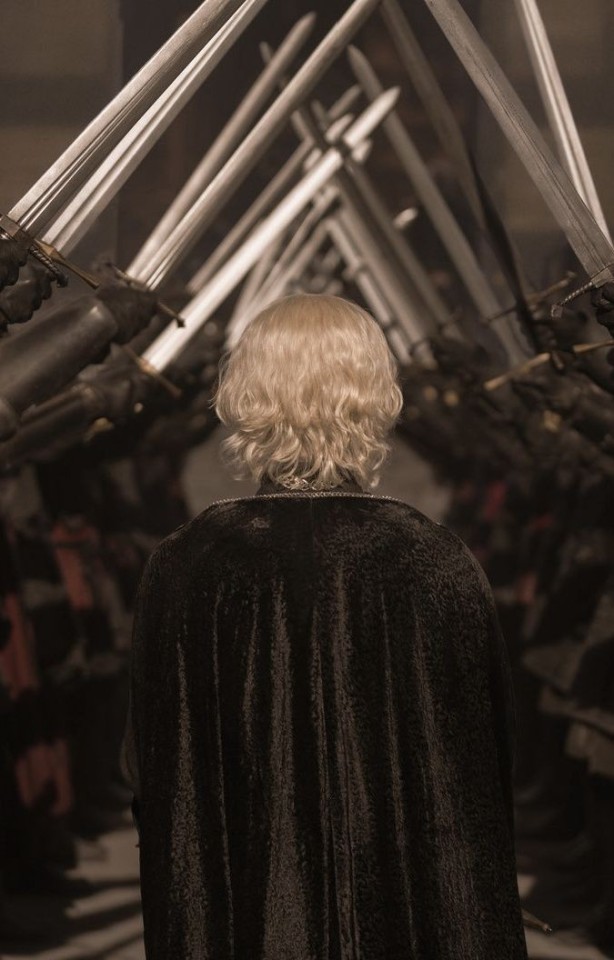
Like most ceremonies, things can go wrong at coronations. Most coronations go off without a hitch yet there are always downsides to a large, expensive ceremony of an unelected figurehead. Surprisingly.
Coronations are often long affairs. There are numerous historical accounts of peers and guests fainting from the exertion of standing in such heavy Robes. These Robes were not only deadly because of heat exhaustion but also their length. The elderly Lord Rolle actually fell down a flight of steps at Queen Victoria's coronation.
Many past coronations have failed due to poor planning. Nicholas II and his Consort Alexandra's coronation was a very lavish affair however due to terrible planning, a stampede occurred where thousands of Russian people where injured and killed. Despite the tragedy, the Couple did not visit the site or the injured, instead going to the French ambassador's ball on bad advice. History would remember him as Bloody Nicholas, made all the more bloody by the Revolution years after.
George IV, as per usual, caused consternation at his own coronation by constantly walking out from under his canopy which caused the nobles holding it to speed up making it all look rather silly.
Guestlists are often contentious points. It is very important not to jar international relations by snubbing foreign powers. While some of the nobles are invited, it is usually expected that the crown will invite representatives from all nations. If invitations are not issued, it can lead to issues. The Royal family is nearly always invited in its entirety even despite criminal activity (fuck you Andrew) but sometimes snubs are issued. Caroline of Brunswick, the rightful Queen Consort, was actually barred from being crowned by her husband. Its rumoured that her hammering on the door could be heard throughout George IV's coronation. Edward VIII, the King who abdicated over his love for Wallis Simpson, was not invited to either his brother's subsequent coronation or his niece's due to the optics of him being a former king and his rumoured ties to Britain's enemies.
Queen Victoria's coronation got off to a very bad start since the coronation ring had been made too small and then shoved onto the wrong ring. Victoria wrote in her diary that she had to rest her hand in ice for the rest of the day.
Coronations are framed as ceremonies of celebrations and national might and while that may be their intention, they are very often, rightly, subject to criticism. Coronations are widely expensive and very often are a display out outdated or unpopular ideals especially modern coronations. In a post WWI world the time of difference is now over and the media rightly critises such an expensive and outdated ceremony. Many monarchies have hastened to modernise to keep up with the new world, cutting down the budgets and revamping the ceremonies. The Swedish monarchs are no longer crowned but instead invested through an oath and sitting on their famous Silver Throne. However, many feel that coronations are becoming a thing of the past and may not be seen in the future.
#Fantasty guide to a Coronation#Coronations#Writing coronations#Writing royalty#Fantasy Guide#writeblr#writing resources#writing reference#writing advice#ask answered questions#writing advice writing resources#writing reference writing resources#Nobles#Nobility#Writing help#coronets
799 notes
·
View notes
Note
Please tell me more about neighbourhood PMCs in renaissance Italy
It would be my pleasure! (My research into this owes a lot to the excellent Power and Imagination: City-States in Renaissance Italy by Lauro Martines.)

The first thing to note that, unlike the condottieri, these were not private military companies. Rather, the neighborhood military companies (in the sense of a military unit, rather than a profit-making entity) were self-defense organizations formed as part of a centuries-long political struggle for control over the urban commune between the signorile (the urban chivalry)/nobilita (the urban nobility) and the populo (the guilded middle class, who claimed to speak on behalf of "the people").
This conflict followed much the same logic that had given rise to the medieval commune in the first place. Legally, the communes had started as mutual defense pacts between the signorile and the cives (the free citizens of the city) against the rural feudal nobility, which had given these groups the military and political muscle to push out the marquises and viscounts and barons and claim exclusive authority over the tax system, the judicial system, and the military.
So it made sense that, once they had vanquished their enemies and established the commune as the sovereign, both sides would use the same tactic in their struggle over which of them would rule the commune that ruled the city. The signorile and nobilita formed themselves into consorteria or "tower societies," by which ancient families allied with one another (complete with dynastic marriage alliances!) to build and garrison the towers with the knights, squires, men-at-arms, and bravi of their households. These phallic castle substitutes were incredibly formidable within the context of urban warfare, as relatively small numbers of men with crossbows could rain down hell on besiegers from the upper windows and bridges between towers, even as the poor bastards on the ground tried to force the heavy doors down below.
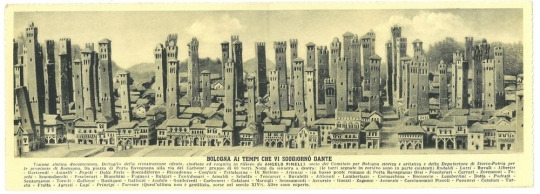
To combat noble domination of communal government, achieve direct representation on the political councils, establish equity of taxation and regulate interest rates, and enforce legal equality between nobility and citizenry, the populo formed themselves into guilds to build alliances between merchants and artisans in the same industries. However, these amateur soldiers struggled to fight on even footing with fully-trained and well-equipped professional soldiers, and the guild militias were frequently defeated.
To solve their military dilemma, the populo engaged in political coalition-building with the oldest units of the urban commune: the neighborhoods. When the cities of medieval Italy were originally founded, they had been rather decentralized transplantations of the rural villages, where before people had any conception of a city-wide collective their primary allegiance was to their neighborhood. As can still be seen in the Palio di Siena to this day, these contrade built a strong identity based on local street gangs, the parish church, their traditional heraldry, and their traditional rivalries with the stronzi in the next contrade over. And whether they were maggiori, minori, or unguilded laborers, everyone in the city was a member of their contrade.
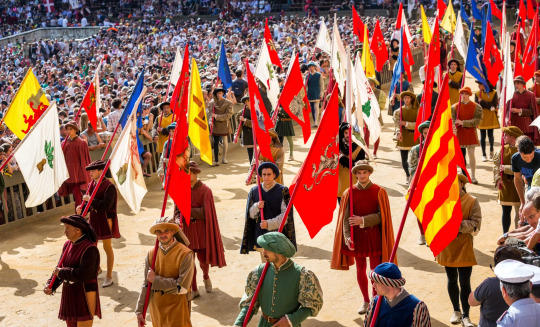
As Martines describes, the populo both recruited from (and borrowed the traditions of) the contrade to form their armed neighborhood companies into a force that would have the manpower, the discipline, and the morale to take on the consorteria:
"Every company had its distinctive banner and every house in the city was administratively under the sign of a company. A dragon, a whip, a serpent, a bull, a bounding horse, a lion, a ladder: these, in different colors and on contrasting fields, were some of the leitmotifs of the twenty different banners. They were emblazoned on individual shields and helmets. Rigorous regulations required guildsmen to keep their arms near at hand, above all in troubled times. The call to arms for the twenty companies was the ringing of a special bell, posted near the main public square. A standard-bearer, flanked by four lieutenants, was in command of each company."
To knit these companies organized by neighborhood into a single cohesive force, the lawyers' guilds within the populo created a state within a state, complete with written constitutions, guild charters, legal codes, legislative and executive councils. Under these constitutions, the populo's councils would elect a capitano del popolo, a professional soldier from outside the city who would serve as a politically-neutral commander, with a direct chain of command over the gonfaloniere and lieutenants of the neighborhood companies, to lead the populo against their noble would-be overlords.
And in commune after commune, the neighborhood companies made war against the consorteria, taking the towers one by one and turning them into fortresses of the populo. The victorious guilds turned their newly-won military might into political hegemony over the commune, stripping the nobilita of their power and privilege and forcing them either into submission or exile. Then they directed their veteran neighborhood companies outward to seize control of the rural hinterland from the feudal aristocracy, until the city had become city-state.
(Ironically, in the process, the populo gave birth to the condottieri, as the nobility who had lost their landed wealth and political power took their one remaining asset - their military training and equipment - and became professional mercenaries. But that's a story for another time...)
#history#historical analysis#renaissance history#renaissance fantasy#medieval cities#city-states#urban communes#guilds#city charters#guild charters#mercenaries#nobility#artisans#burgher rights#merchants
134 notes
·
View notes
Text

"Ahsan, the Just" (0002)
(More of The Ahsan Portrait Series)
0001
#ai artwork#ai men#ai generated#ai art community#ai image#ai gay#gay ai art#longhairedguys#longhairmen#longhairedmen#long hair#royalty#nobility#arabian#muscular#ai art#art direction#guys with beards#bearded hunk#bearded man#handsome#gay fantasy#gay fantasy art#arab men#arab man#fashion illustration#fictional characters
54 notes
·
View notes